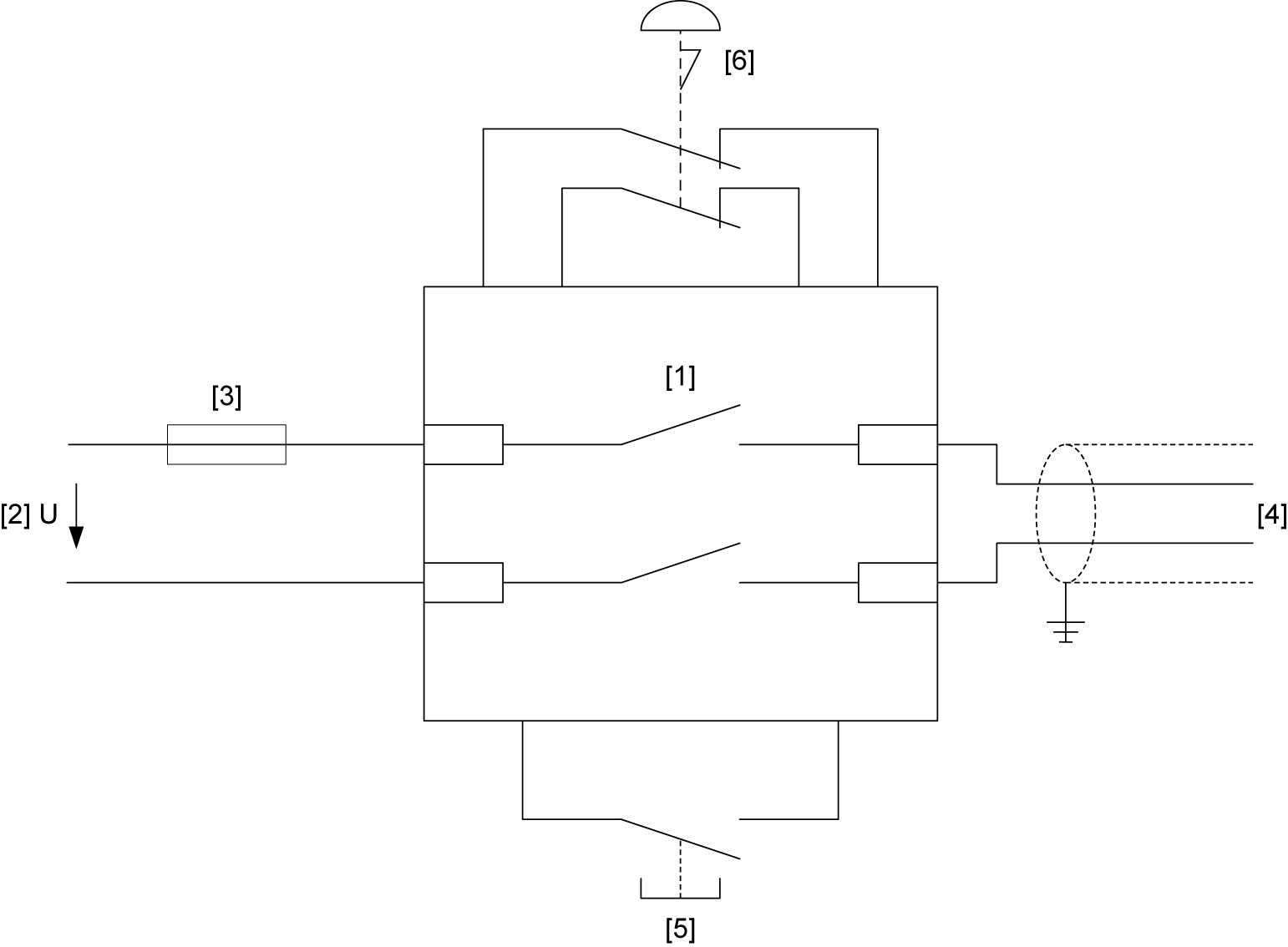Requirements on the external safety controller

[1] | Safety relay with approval |
[2] | DC 24 V voltage supply |
[3] | Fuses in accordance with the manufacturer's specifications of the safety relay |
[4] | Safety-related DC 24 V voltage supply |
[5] | Reset button for manual reset |
[6] | Approved emergency stop actuating device |
A safety relay can be used as an alternative to a safety controller. The following requirements apply analogously.
- The safety controller and all other safety-related subsystems must be approved for at least the safety class required in the overall system for the respective application-related safety function.
- The following table shows an example of the required safety class of the safety controller:
Application | Safety controller requirements |
|---|---|
Performance level d according to EN ISO 13849-1 | Performance level d according to EN ISO 13849-1 SIL 2 according to EN 61508 |
- The wiring of the safety controller must be suitable for the required safety class (see manufacturer documentation).
- If the DC 24 V supply is safely disconnected at the positive pole only, no test pulses must be applied to this pole in disconnected condition.
- If the DC 24 V supply is disconnected at both poles, the test pulses must not be applied at the same time at the plus and minus outputs. In this case, the test pulse must be applied with a time delay.
- SEW-EURODRIVE recommends to switch off the 24 V supply at two poles.
- The values specified for the safety controller must be strictly adhered to when designing the circuit.
- The switching capacity of the safety relays or the relay outputs of the safety controller must correspond at least to the maximally permitted, limited output current of the 24 V supply voltage.
- Observe the manufacturer's instructions concerning the permitted contact loads and fusing that may be required for the safety contacts. If the manufacturer provides no specific information, the contacts must be protected with 0.6 times the nominal value of the maximum contact rating specified by the manufacturer.
- To ensure protection against unintended restart in accordance with EN ISO 14118, the safe control system must be designed and connected in such a way that resetting the command device alone does not lead to a restart. This means that a restart may be carried out only after a manual reset of the safety circuit.